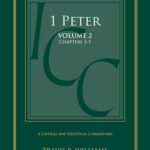Book Note for Academic Writers
 Rowman & Littlefield just graciously sent me a desk copy of their Guide to Writing with Sources by James Davis (2012), so I took the requisite 45 minutes to read it. Since I teach Theological Research Methods here at DBTS, I try to keep up on sources of this nature, and this one was a gem. Well mostly—the introduction almost derailed me with some blather about how corporate interests are collectively destroying the factuality of the Internet. But I kept reading long enough to discover the salient point the author was making: we live in a post-fact world, and this fact should unsettle us.
Rowman & Littlefield just graciously sent me a desk copy of their Guide to Writing with Sources by James Davis (2012), so I took the requisite 45 minutes to read it. Since I teach Theological Research Methods here at DBTS, I try to keep up on sources of this nature, and this one was a gem. Well mostly—the introduction almost derailed me with some blather about how corporate interests are collectively destroying the factuality of the Internet. But I kept reading long enough to discover the salient point the author was making: we live in a post-fact world, and this fact should unsettle us.
A remedy? Learn to use sources carefully and honestly. And in explaining how to do that, Davis hits a homerun. He asks and answers six questions that freshman seminarians seem rarely to have asked, but questions that every academic writer needs to answer correctly in order to write effectively with sources:
- When do you need to acknowledge a source?
- When should you paraphrase and when should you quote?
- How should you paraphrase information from a source?
- How should you quote information from a source?
- How should you punctuate quotations?
- How should you select and cite electronic internet sources?
The irony of using a weblog to encourage aspiring writers to read about writing is palpable, and I’ve steeled myself against the possibility that I won’t get any Facebook likes for this post, but I’ll keep trying. Tolle Lege.



Your reverse psychology worked this time. I felt compelled to “Like” this post. Perhaps, on the other hand, it has something to do with the fact that I’ve been grading papers this morning.